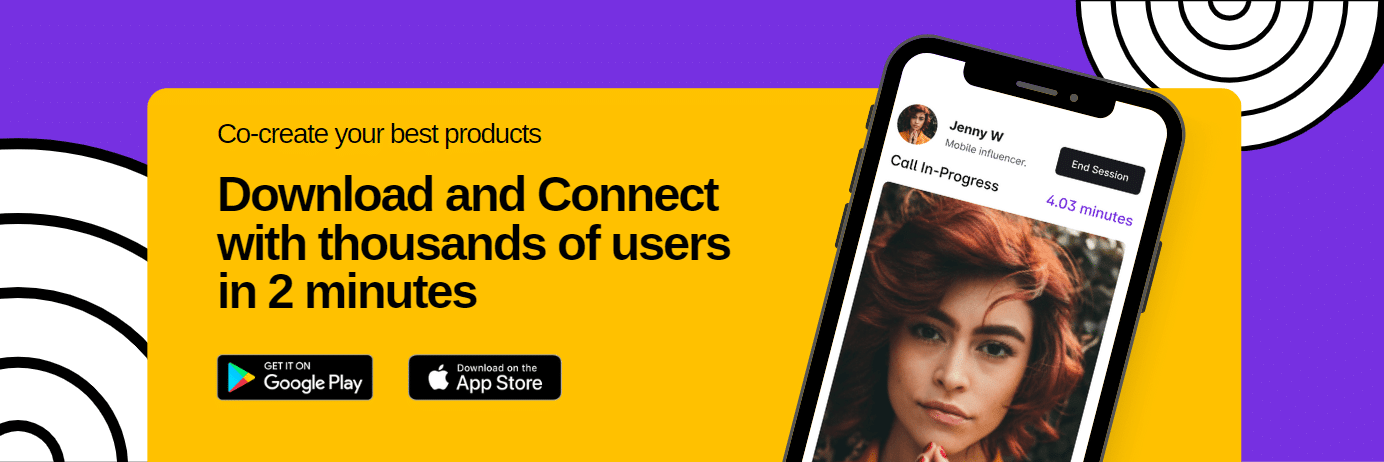The Ultimate Guide to Tracking Customer Feedback over Time
April 24, 2023
How to run a user testing session for maximum insights
July 10, 2023The Ultimate Guide to Tracking Customer Feedback over Time
April 24, 2023
How to run a user testing session for maximum insights
July 10, 2023
Tips on how to get higher quality users for feedback
Screening for real users for your feedback session
Getting feedback on your product while you're building it can help you avoid costly assumptions and mistakes. Sure, once you launch you will have analytics and experimentation methods that proves whether you were right or wrong, but at that point you would have already spent the energy and effort, and resources.
When getting feedback, the most important part is finding real users who reflects your Ideal Customer Profile. Finding users to provide reliable feedback on your product is one of the most important activities you will do when building your product or feature. After all, you need these users to challenge your assumptions and guide you on the "why" behind their pain-points and what it would take to solve them.
Now among millions of people out there, how do you make sure that the ones who say "yes" to providing feedback are actually qualified and genuine? The good news is, once you've mastered the screening questionnaire, it won't be hard to tell real users apart from "fake" ones.
Here are three tips to help you:
- Avoid asking yes or no questions when setting up your criteria
- Leave the subject of focus in the multiple choice options
- Ensure all options in the multiple choice are viable
Avoid asking yes or no questions
When you ask someone "Did you purchase a product from ABC Store in the past 3 months?", it becomes too easy for the respondent to answer "Yes", because it's quite obvious that is what the question is looking for. On top of that, if your screening questionnaire's title is "Looking for people who have purchased a product from ABC Store for feedback", you would be giving it all away.
In order to remove the ability to game it, re-phrase the question in such a way that doesn't allow the user to say "Yes" or "No". In the same example, instead ask "What did you buy in the last 3 months?".
Leave the subject of focus in the multiple choice questions
If you're looking for someone who have purchased a product from ABC Store in the last 3 months, put ABC Store as a multiple choice. Following the same example above, make "A product from ABC Store" on the options that respondents can select when answering the questionnaire. The behaviour is put in the question, while the actual subject is in the answer.
Another example would be if you're looking for someone who has experience playing the guitar. You can ask "Which of these instruments do you play?" and place "Guitar" as one of the options.
Ensure all options are viable
If other options you put in the multiple choice question seem unrelated, it is also very easy for respondents to know the answer you are looking for.
In the same example, if you're looking for someone who has purchased a product from ABC Store, then other viable options to put would be Walmart, Costco, IKEA to name a few examples. Or in the guitarist example, you would put other instruments like the piano, the violin, drums as viable answers. Lastly, don't forget to leave a "Not applicable" option in the choices as well.
Putting it together
Now that we've gone through the steps to eliminate bias and screen for real users, let's put it together into an example. Here's what a screening criteria could look like for the two examples:
What product did you buy in the last 3 months?
- A product from Walmart (Reject)
- A product from ABC Store (Select)
- A product from Costco (Reject)
- A product from IKEA (Reject)
- Not applicable (Reject)
Which of these instruments do you play?
- Piano
- Guitar
- Violin
- Drums
- Not applicable
